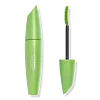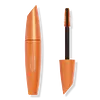What's inside
What's inside
 Key Ingredients
Key Ingredients

 Benefits
Benefits

 Concerns
Concerns

 Ingredients Side-by-side
Ingredients Side-by-side

Water
Skin ConditioningAcrylates Copolymer
Glyceryl Stearate
EmollientDisteardimonium Hectorite
StabilisingStearic Acid
CleansingCopernicia Cerifera Wax
Propylene Glycol
HumectantTriethanolamine
BufferingPolyethylene
AbrasiveLecithin
EmollientPropylene Carbonate
SolventPolyvinyl Alcohol
Synthetic Wax
AbrasiveOleic Acid
EmollientAlcohol Denat.
AntimicrobialBenzyl Alcohol
PerfumingPanthenol
Skin ConditioningPhenoxyethanol
PreservativeMethylparaben
PreservativeGlycerin
HumectantEthylparaben
PreservativePropylparaben
PreservativeAscorbyl Palmitate
AntioxidantXanthan Gum
EmulsifyingTocopherol
AntioxidantTrisodium EDTA
Simethicone
EmollientTocopheryl Acetate
AntioxidantMethylcellulose
Emulsion StabilisingIron Oxides
Ultramarines
Titanium Dioxide
Cosmetic ColorantWater, Acrylates Copolymer, Glyceryl Stearate, Disteardimonium Hectorite, Stearic Acid, Copernicia Cerifera Wax, Propylene Glycol, Triethanolamine, Polyethylene, Lecithin, Propylene Carbonate, Polyvinyl Alcohol, Synthetic Wax, Oleic Acid, Alcohol Denat., Benzyl Alcohol, Panthenol, Phenoxyethanol, Methylparaben, Glycerin, Ethylparaben, Propylparaben, Ascorbyl Palmitate, Xanthan Gum, Tocopherol, Trisodium EDTA, Simethicone, Tocopheryl Acetate, Methylcellulose, Iron Oxides, Ultramarines, Titanium Dioxide
C11-13 Isoparaffin
SolventPolyethylene
AbrasiveDisteardimonium Hectorite
StabilisingCopernicia Cerifera Cera
EmollientTrihydroxystearin
Skin ConditioningPropylene Carbonate
SolventPentaerythrityl Hydrogenated Rosinate
Glyceryl Rosinate
PerfumingTalc
AbrasivePhenoxyethanol
PreservativePropylparaben
PreservativePanthenol
Skin ConditioningTocopheryl Acetate
AntioxidantSorbitol
HumectantIron Oxides
CI 77891
Cosmetic ColorantIngredients Explained
These ingredients are found in both products.
Ingredients higher up in an ingredient list are typically present in a larger amount.
Disteardimonium Hectorite comes from the clay mineral named hectorite. It is used to add thickness to a product.
It can also help stabilize a product by helping to disperse other ingredients.
Hectorite is a rare, white clay mineral.
Learn more about Disteardimonium HectoritePanthenol is a common ingredient that helps hydrate and soothe the skin. It is found naturally in our skin and hair.
There are two forms of panthenol: D and L.
D-panthenol is also known as dexpanthenol. Most cosmetics use dexpanthenol or a mixture of D and L-panthenol.
Panthenol is famous due to its ability to go deeper into the skin's layers. Using this ingredient has numerous pros (and no cons):
Like hyaluronic acid, panthenol is a humectant. Humectants are able to bind and hold large amounts of water to keep skin hydrated.
This ingredient works well for wound healing. It works by increasing tissue in the wound and helps close open wounds.
Once oxidized, panthenol converts to pantothenic acid. Panthothenic acid is found in all living cells.
This ingredient is also referred to as pro-vitamin B5.
Learn more about PanthenolPhenoxyethanol is a preservative that has germicide, antimicrobial, and aromatic properties. Studies show that phenoxyethanol can prevent microbial growth. By itself, it has a scent that is similar to that of a rose.
It's often used in formulations along with Caprylyl Glycol to preserve the shelf life of products.
Polyethylene is a synthetic ingredient that helps the skin retain moisture. It is a polymer.
It is also typically used within product formulations to help bind solid ingredients together and thicken oil-based ingredients. When added to balms and emulsions, it helps increase the melting point temperature.
This ingredient is a solvent. It helps dissolve active ingredients and alter the texture of products.
Propylene Carbonate is commonly used in makeup and with clay, such as montmorillonite or bentonite.
Studies show this ingredient to be safe for cosmetics. When it is undiluted, it can cause skin irritation. (It is always diluted in skincare and makeup). This ingredient is water-soluble.
Propylene Carbonate is created from propylene glycol and carbonic acid.
Learn more about Propylene CarbonatePropylparaben is a preservative and is a paraben with antifungal and antimicrobial properties.
This ingredient can be naturally found in plants and insects, but most of it is synthetically manufactured for human use. In cosmetics, it is usually created by reacting para-aminobenzoic acid and propanol (an alcohol).
You can usually find this ingredient in water-based products.
Parabens have come under controversy due to the claim they are hormone disruptors. Studies show conflicting results. We recommend speaking with a professional if you have any concerns.
Propylparaben is commonly found in food, medicine, and cosmetics.
Learn more about PropylparabenTocopheryl Acetate is AKA Vitamin E. It is an antioxidant and protects your skin from free radicals. Free radicals damage the skin by breaking down collagen.
One study found using Tocopheryl Acetate with Vitamin C decreased the number of sunburned cells.
Tocopheryl Acetate is commonly found in both skincare and dietary supplements.
Learn more about Tocopheryl AcetateThis ingredient is a combination of red, black, and yellow iron oxide pigments. This combination of colors is usually found in foundation, because it results in a "skin" color.